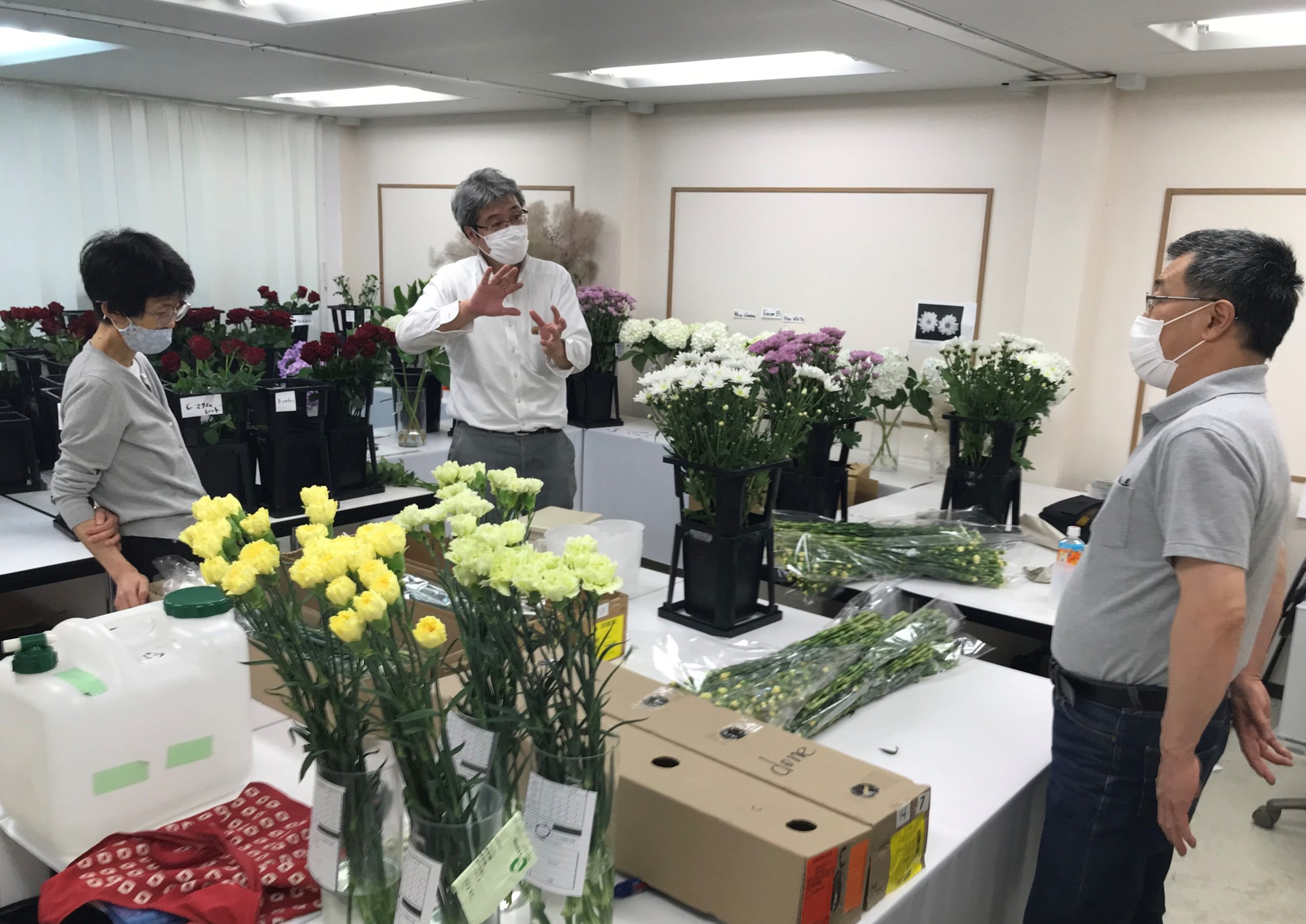From Research and Testing Room Vol.6
It’s summer again, but not an ordinary one.
Hello this is Kita again from Classic’s research and testing room!
Now we entered August. If this summer was similar to the one we usually have, this year, we would be surrounded by the Olympic excitement by now. Clearly, COVID-19 affects the Olympics, our life, and our decisions in many ways— for example, we give a second thought about going on a trip while the government is promoting the GO TO Travel campaign.
I don’t really mind this “new normal” life because personally, I prefer chilling at home and reading books in a cool, air-conditioned room than going out anyways. If you get tired of staying at home, I hope that you remember that you can “enjoy home with flowers” and appreciate the flower power for even a brief moment.
A Pop Quiz from Research and Testing Room
One of my routine works is to prepare a weekly report about our activities at the research and testing room. Every once in a while, I throw a “pop quiz” in this report. Some people actually answer, but sometimes there are only a few people who respond to such impromptu questions. At those times, I wonder if people are really reading my report… tears.
In my recent report, I ask my colleagues to explain the difference between “試験 (shiken, test)” and “実験 (jikken, experiment).” Those Japanese words are often used interchangeably, but can you tell the difference? Maybe it is too easy for you that it may seem like a riddle, but it is not!
Well, it may not be a textbook answer, but here is my definitions for each:
試/test is conducted to see if something matches with the standard or criteria, just like entrance exam at school. 実験/experiment is the course of study to decide if a hypothesis is true or false. Besides those two, we have 調査(chousa, research) to gather and analyze information.
To see if there is any new findings by changing the storage conditions including the temperature setting is an “experiment” because it is based on the idea that storage conditions affect the quality of flowers. Meanwhile, to see the actual condition of new varieties is a “research” because you merely try to get some information and analyze those data you gather.
Before Classic introduces a new variety to our customers, we should always pass some sort of “test” to prove that it meets Classic’s Standard for quality. However, in some cases we struggle to define “our standard” to begin with. Whenever we encounter such difficulties, I strongly feel the need to set and define our solid quality standard for each and all of our flowers.
Quality In-house Education from Research and Testing Room
I am hoping to be a help to develop the professional growth of our human resources in my own way. I often give a lecture (presentation) in our various types of internal meetings to share the knowledge I developed through my work at the research and testing room. Then recently, I have prepared an exam on flowers’ quality (which comprises of 20 questions). Those questions test the very basic knowledge about flowers and its quality. I am personally curious about how my colleagues score, but the result does not matter much. What I am hoping for is that this test sparks the motivation among them to learn more about flowers. Anyways, I will let you know how it goes…!
Developing New Product for Home Décor
The Japanese market for flowers to decorate home is expected to grow progressively larger in the industry and we must exploit this increasing demand. I’ve heard someone talking about “color bath effect*1” recently, but ever since we started to use the keywords such as “home-use” “flowers for home decoration” “daily lives with flowers” I feel that we draw more information related to such words.
One day, one of our buyers was talking about a kind of flowers which caught his eyes in a flower shop he has visited. After some discussion, we have decided to examine the possibilities of importing this flower. This is the kind which can be used for fall or winter arrangements as well as home decorations.
So, I went and got some domestically grown ones to conduct a research first. When I held and tapped this flower, many little insects fell off… This represents a great obstacle since we must pass the strict Plant Quarantine inspection to obtain approval for importation.
If the growers cannot control those insects and bacteria in the field during the production process, then we have to ask them to apply insecticide and anti-bacterial after harvest and prior to the exportation. Those treatments will likely damage the flowers and deteriorate its quality as well, making the bar for importing and selling such flowers extremely high. Once again we keenly felt the difficulty of developing and introducing a new product; there are many barriers in front of us.
*1 Color Bath Effect is a psychological phenomenon that when you become aware of a certain thing, you tend to gather information which are related to it.
Would You “GO TO Travel” or “Stay at Home”?
Wherever you are, whether you are out and about or at home, flowers around you will help you relax and lift your spirit up. Now is the best time to experience the power of flowers… we really hope that more and more people will take flowers home and “enjoy home with flowers.” One of the new normal in the lifestyle we have adopted amid COVID-19 pandemic is to keep a physical distance from each other. At the same time, we all want to keep ourselves socially close and stay connected with each other. Flowers can serve as a bridge between people—we will be more than happy to be a part of the warm-hearted circle of people’s lives through our flowers.





